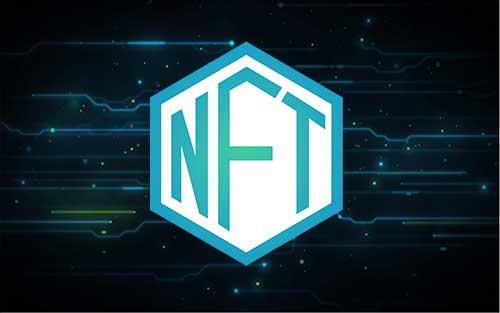Due to its growing price and increasing presence in creative works such as art, tweets, songs, memes, photographs, other digital media, or a virtual representation of, Non-Fungible Tokens (hence, NFTs) have become a popular issue over the last couple of months. NFTs are a cryptographically created receipt of ownership of a certain thing or entity. In a nutshell, they let a person prove that they own an asset. A blockchain-based NFT uses a database or ledger to keep track of transactions. Furthermore, each NFT has its own set of metadata that can’t be changed or traded, making it one-of-a-kind (i.e. non-fungible).
This novelty, along with the possibility of making money, has managed to attract attention and raise prices. A recent example is the $2.9 million sales of Jack Dorsey’s tweet. The situation with NFTs, on the other hand, is not as straightforward as it appears. We must immediately address the problem of their ownership and copyright. As a result, the focus of this article is on these details. Furthermore, because NFTs are not streamlined by courts, the analysis is based on the fundamentals of IP and Contracts Law.
CLAIMS AND ISSUES RELATING TO COPYRIGHT:

Furthermore, by focusing on the contractual agreements between the two parties, it is possible to understand if ownership of the NFT’s copyright is transferred under its sale. An individual can transfer copyright rights to a buyer in writing under section 19 of the Act. As a result, it is possible to secure the NFT’s copyright and ownership. NFTs, on the other hand, are commonly marketed without copyright ownership. The NFT “Every day’s: the First 5000 Days,” was sold for almost USD 69 million, and was sold without any copyright license or agreement. Licensing is now an option in circumstances where the NFT is sold without the copyright. There, licenses govern the rights and scope of the agreement to the extent that they are limited to the agreed-upon objective. A signed picture or poster is an equivalent example. An individual can possess an artwork, but the artist retains the copyright.
ISSUES OF JURISDICTION:
The Foreign Exchange Management Act, 1999 (hereafter FEMA) oversees cross-border commercial activity in India. NFTs are traded across borders on numerous platforms and are classified as economic activities due to the presence of various assets such as kind, cryptocurrency, and other NFTs. For the time being, NFTs can be classified as intangible assets under FEMA’s software and intellectual property laws. However, because the specific location of crypto-assets cannot be determined, the jurisdictional issue cannot be fully addressed. Because of their digital nature, Blockchains (the ledger where NFT records are kept) cannot be stored anywhere. With the anonymity of blockchains, catching a person who has broken an NFT is difficult.
Furthermore, the lack of regulation in the cryptocurrency space leaves them vulnerable to risk. The Indian government has taken a neutral stance on the legality of cryptocurrencies so far, but the ‘Banning of Cryptocurrency & Regulation of Official Digital Currency Bill, 2019’ may stifle further expansion of these assets while also raising questions about their legality. On a global basis, there is no law controlling NFTs or their protection. The Berne Convention, on the other hand, maybe depend upon copyright protection.
REPRODUCTION AND ADAPTATIONS:
Because NFTs work through the internet, they allow for easy reproduction, copying, and circulation of work in the digital realm. It creates a slew of complicated legal issues with copyright infringement. If the work is said to have been reproduced without the owner’s permission, it may be construed as infringement under Article 1(4) of the WIPO Copyright Treaty and Article 9(1) and (3) of the Berne Convention. In addition, Section 14 of the Act covers copyright reproductions and adaptations in India. When someone wishes to sell an NFT, they can now make a copy of the creative work and deliver it to the buyer, thereby triggering Section 14 claims. The fabrication of several copies may devalue the original work due to its ease of reproduction and circulation. Furthermore, the artist who created the NFT forfeits the royalty they would ordinarily receive from the usage and resale of their work. Section 15 of the Act provides for a recurrent royalty on future sales by the buyer(s), which would not be followed in this scenario.
CONCLUSION:
The lack of a clear regulatory framework for crypto-assets exposes the market to risks. The rising popularity of crypto-assets, as well as the speculative interest in profiting from them, demands our immediate attention. NFTs can either have a suitable regulation preserving one’s copyright and establishing a safe market for investments, or they can end up being another short-lived program. The absence of regulation puts the space in the doldrums, thus it’s critical to build a comprehensive framework that either facilitates preservation or prohibits these assets.
Author: Satakshi N Dixit – a student of NMIMS University (Mumbai), currently an intern at at Khurana & Khurana, Advocates and IP Attorneys. In case of any queries please contact/write back to us at vidushi@khuranaandkhurana.com.



